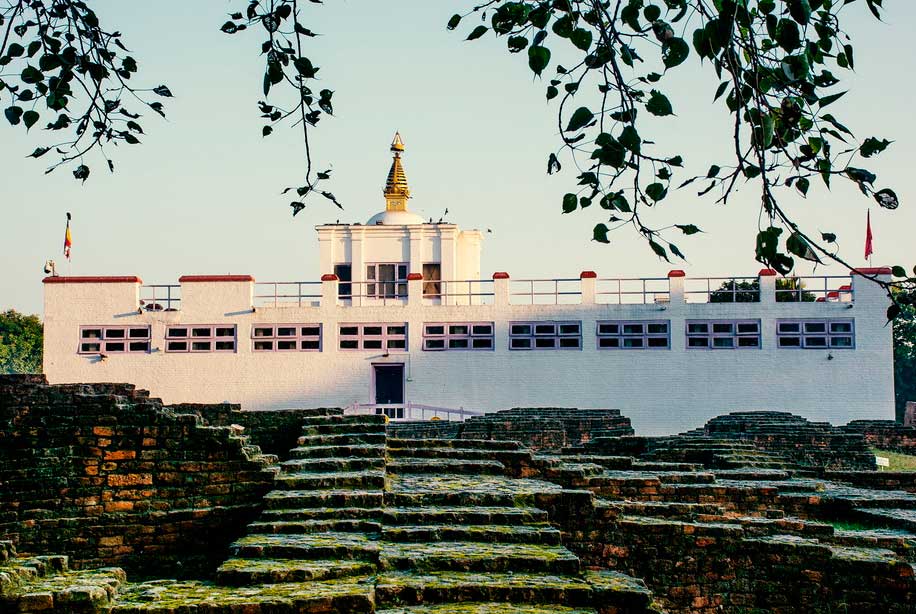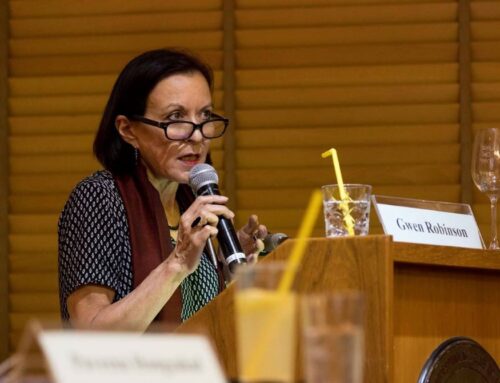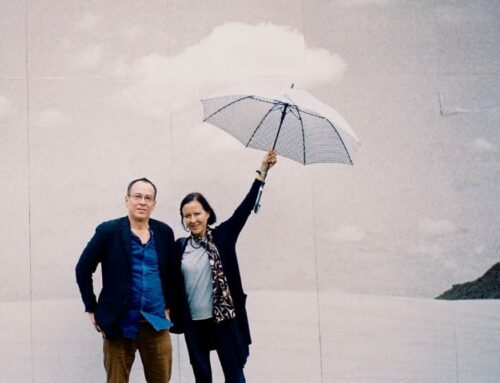Mayadevi Temple and ruins of ancient monasteries in Lumbini
Photo by P. Uraisin
Lumbinī
Lumbinī (Nepali and Sanskrit: “the lovely”) is a Buddhist pilgrimage site in the Rupandehi District of Lumbini Province in Nepal. It is the place where, according to Buddhist tradition, Queen Mahamayadevi gave birth to Siddhartha Gautama in 563 BCE. Gautama, who achieved Enlightenment some time around 528 BCE, became the Buddha and founded Buddhism. Lumbini is one of many magnets for pilgrimage that sprang up in places pivotal to the life of the Buddha.
Lumbini has a number of older temples, including the Mayadevi Temple, and various new temples, funded by Buddhist organisations from various countries, have been completed or are still under construction. Many monuments, monasteries and a museum, and the Lumbini International Research Institute are also within the holy site. Also, there is the Puskarini, or Holy Pond, where the Buddha’s mother took the ritual dip prior to his birth and where he had his first bath. At other sites near Lumbini, earlier Buddhas were, according to tradition, born, then achieved ultimate Enlightenment and finally relinquished their earthly forms.
Lumbini was made a World Heritage Site by UNESCO in 1997.
Mayadevi Temple and ruins of ancient monasteries in Lumbini
Maya Devi Temple is an ancient Buddhist temple situated at the UNESCO World Heritage Site of Lumbini, Nepal. It is the main temple at Lumbini, a site traditionally considered the birthplace of Gautama Buddha. The temple stands adjacent to a sacred pool (known as Puskarni) and a sacred garden. The archaeological remains at the site were previously dated to the third-century BCE brick buildings constructed by Ashoka. A sixth-century BCE timber shrine was discovered in 2013.
2013 discovery
In November 2013, an international team of archaeologists digging under the temple discovered the remains of an ancient tree shrine dated before 550 BCE. The researchers speculated that the site is the earliest evidence of Buddhist structures and the first archaeological evidence of Gautama Buddha’s life. The excavation was headed by Robin Coningham of Durham University, UK, and Kosh Prasad Acharya of the Pashupati Area Development Trust, Nepal. According to Coningham, the shrine is “the earliest Buddhist shrine in the world.”[5] The speculations of the researchers were widely reported in international press, to the dismay of the rest of the scientific community, who mostly have disputed the conclusions of the researchers. Julia Shaw, a lecturer in South Asian archaeology at University College London, cautioned that the shrine may represent pre-Buddhist tree worship, and that further research is needed. The conclusions drawn by the researchers were also heavily criticized by Buddhist scholar Richard Gombrich.
Story by Wikipedia
Source Link: Lumbini
Source Link: Maya Devi Temple, Lumbini





